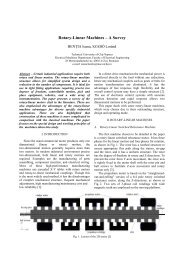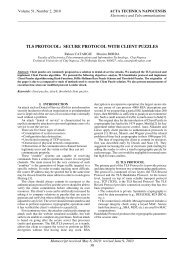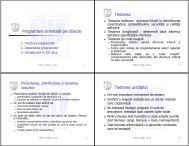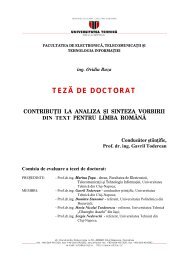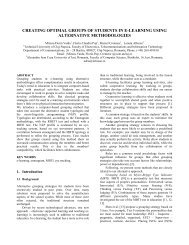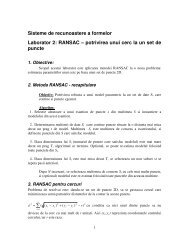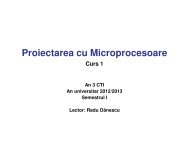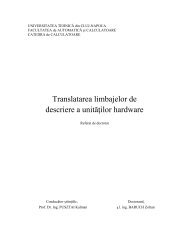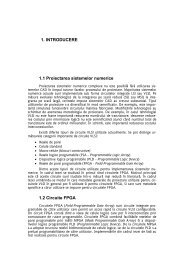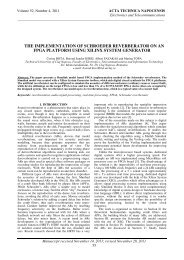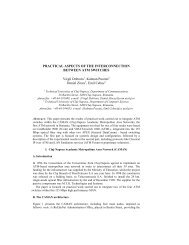LTE Emulator
LTE Emulator
LTE Emulator
You also want an ePaper? Increase the reach of your titles
YUMPU automatically turns print PDFs into web optimized ePapers that Google loves.
TUCN – Data Transmission Laboratory<br />
The parameters associated to the command and control block are read and the emulation<br />
process is started by pushing the “Start/Stop” button.<br />
When this button is pushed the following actions are performed:<br />
o the emulation parameters are read from the interface;<br />
o the file containing the statistics required by the emulation is read and the data structures<br />
storing these statistics during the emulation process are built; these structures are built in<br />
such a way to allow a fast generation of the random variables associated to the<br />
instantaneous bit rate and to the error distribution – see paragraph 5.2.2. related to the<br />
generation of the statistics tables and paragraph 3.2.2. related to the generation of<br />
random variables distributed according a given pdf function);<br />
o the communication channels to the network cards associated to the emulator, which<br />
receive/transmit data packets, are open;<br />
o the packet-capture block is initialized;<br />
o the threads that emulate the transmissions in the downlink and uplink directions are<br />
launched.<br />
10<br />
3.1.3. The emulation statistics display block<br />
In parallel with emulation of the transmission (delay of the received packets and error<br />
insertion in these packets), some significant statistics related to the emulation process are<br />
displayed.<br />
Three graphs included in the user interface are displayed, namely the evolution in time of<br />
the average bit rate, the time-evolution of the number of inserted errors and of the average delay<br />
of the packets passing through the emulator. These graphs allow the correlation between the<br />
position of the main user (the emulated user) inside the cell, which determines its instantaneous<br />
SNR, and the main parameters that define the transmission quality.<br />
3.2. Main operations performed in the emulation process<br />
The operations performed by the emulator are grouped in 3 separate threads [Thr] namely:<br />
o the main thread (the main program) – performs the operations related to the SNR<br />
calculation, as explained in paragraph 3.1.1. dedicated to the signal to noise ratio<br />
computation block. This operation uses the system timer, with a timing of 1s, to generate<br />
the real time. The actualization of the mobile position and implicitly of the SNR value<br />
is performed at each second;<br />
o the thread associated to the uplink connection – performs in the present version only the<br />
filtering and interception of the packets received from the computer (or computers)<br />
acting as mobile station(s). The captured packets are transferred at the network card<br />
which ensures the connection with the computer (or computers) acting as base station(s)<br />
without any delays and errors. The speed in the uplink is limited only by the processing<br />
time of the packet filtering and capturing operations;<br />
o the thread associated to the downlink connection – performs the filtering and<br />
interception of the packets received from the computer (or computers) acting as base<br />
station(s), the delay of the received packets and the error insertion according to the<br />
appropriate statistics which characterize the emulated situation;<br />
If the emulation process is stopped, the packets are only intercepted and transmitted to the<br />
network card ensuring the connection with the computer (or computers) acting as mobile<br />
station(s).<br />
If the emulation process is enabled, the intercepted packets are read from the reception<br />
buffer according to the instantaneous bit rate, i.e. the numbers of bytes calculated according to<br />
the pdf of the instantaneous bit rate are read in each TTI interval and then errors are inserted in<br />
these bytes according to the distribution of the errors.



